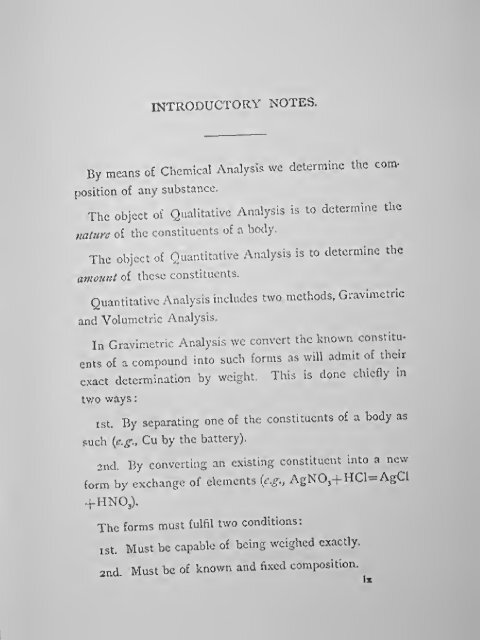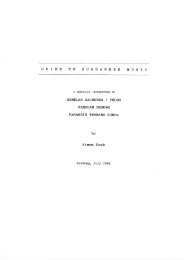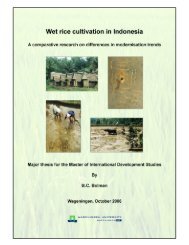The Students' Guide in Quantitative Analysis - Free Ebooks Library
The Students' Guide in Quantitative Analysis - Free Ebooks Library
The Students' Guide in Quantitative Analysis - Free Ebooks Library
You also want an ePaper? Increase the reach of your titles
YUMPU automatically turns print PDFs into web optimized ePapers that Google loves.
INTRODUCTORY NOTES.<br />
By means o£ Chemical <strong>Analysis</strong> we determ<strong>in</strong>e the com-<br />
position of any substance.<br />
<strong>The</strong> object of Qualitative <strong>Analysis</strong> is to determ<strong>in</strong>e the<br />
nature o£ the constituents of a body.<br />
<strong>The</strong> object of <strong>Quantitative</strong> <strong>Analysis</strong> is to determ<strong>in</strong>e the<br />
amount of these constituents.<br />
<strong>Quantitative</strong> <strong>Analysis</strong> <strong>in</strong>cludes two methods, Gravimetric<br />
attid Volumetric <strong>Analysis</strong>.<br />
In Gravimetric <strong>Analysis</strong> we convert the lcno\vn cousritu-<br />
ents o£ a compound <strong>in</strong>to such forms as will admit of their<br />
exact determ<strong>in</strong>ation by weight. This is done chiefly <strong>in</strong><br />
two ways<br />
:<br />
1st By separat<strong>in</strong>g one of the constituents of a body as<br />
fuch {e.g., Cu by the battery),<br />
2nd, By convert<strong>in</strong>g an exist<strong>in</strong>g constituent <strong>in</strong>to a new<br />
form by e^cchange of elements {e.g., AgN03+HCl = AgCl<br />
+HNOj).<br />
<strong>The</strong> forms must fulfil two conditions:<br />
1st Must be capable of be<strong>in</strong>g weighed exactly.<br />
2nd, Must be of known atid fixed composition.








